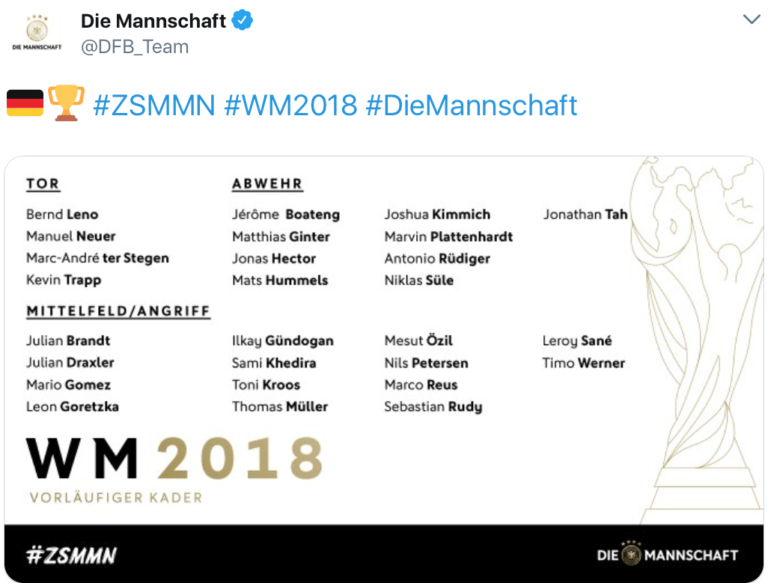Anelise Cimino, Senior Digital Analyst

With the World Cup in Russia drawing closer, the date for official roster announcements came and went with fanfare. Fans hotly debated roster composition, analysts created their own “dream rosters,” and other fans sat at home bitterly wishing their country had qualified for the World Cup this year.
World Cup roster announcements used to just strictly be a formal broadcast press announcement that listed the names of players that made the squad for each team. However, teams now have the world at their fingertips in the form of social media.
Teams can now create content specifically for social media that will be watched, shared, viewed, ridiculed and praised by millions of fans and rivals from across the world. The global nature of social media means that teams can control their image well ahead of stepping on the pitch in Russia. In 2018, teams chose to reinforce their global image, introduce their squad to the world and even reinvent themselves.
National teams in 2018 approached this roster deadline from a variety of standpoints.
GERMANY

The current reigning champ and perennial powerhouse Germany created a simple and traditional graphic post that closely followed announcements of days past. This announcement reached their +12M followers across both German and English social media channels and garnered over 200K engagements. This format falls in line with how the Germans approach their soccer and how they want to market their team to the world. The Germans do not have anything else to prove to the World, they’re already the reigning 2014 World Cup Champions.
ICELAND

Meanwhile, Iceland is the current darling of the World Cup cycle as a first-time participant. Their announcement centered around a seven-minute-long “hype” video that showcased the small country, the team and the energetic fans that support them. With a population of just over 330,000, Iceland is hitting it out of the park in terms of reaching a more global fanbase with their roster announcement potentially reaching +55M on the day of the announcement. This is Iceland’s first ever foray on the World Cup stage and they want to not only leave a mark on the field, but also leave a lasting impression with other fans.
ENGLAND

England had an entirely different approach to the announcement of their roster, and for good reason. The British have had inconsistent success on the pitch at the World Cup over the past few cycles and are trying to reestablish their name within the footballing world. Youth dominates this World Cup roster with the average age falling just above 26 and containing players that are still in their teens (i.e. Trent Alexander-Arnold). The England roster announcement reflected this youthful tone and used a diverse teenage fanbase from across the country to announce the players in an upbeat, fun video that has been viewed over 4.6M times and received +120K in engagements from a social media following of +9M fans.
With these different World Cup roster announcement formats, teams are seeking to either reinforce the image they’ve created for themselves over the years (Germany), introduce themselves to the world (Iceland), or change up the preconceived notions fans may have about them (England).
Social media has become a driving force in disseminating these differing messages across the world. The ability to reach every corner of the Earth via social outlets allows these countries to create an image before they step out on to the pitch in Russia in June.